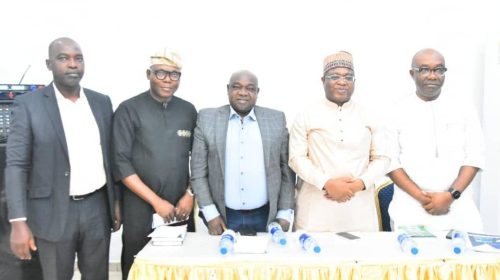Uncertainty around climate change implications should not prevent action: Aeolus

By STEVE EVANS— Uncertainty around the potential implications of climate change for the insurance and reinsurance industry should not be a barrier to incorporating climate-related risk analysis into decision making, according to Aeolus Capital Management Ltd.
In the first of a series of research papers on climate change and its implications for those underwriting or investing in insurance and reinsurance related risks or assets, Dr. Peter Dailey, Head of Research at Bermuda based reinsurance and insurance-linked securities (ILS) focused investment fund manager Aeolus, explains why the manager is investing to help it reduce uncertainty and enhance its understanding of the potential ramifications of unhindered climate change.
As a manager of portfolios of largely catastrophe and severe weather exposed reinsurance investments, Aeolus has been growing its own research capabilities, with the hiring of Dr. Peter Dailey this year demonstrating the asset manager’s determination to ensure climate risk is adequately understood and factored into investment decisions.
In introducing the forthcoming series of climate change research papers that Aeolus will publish, Dailey explains that, “(Re)Insurance companies, and others whose financial success depends on a robust assessment of risk, are fundamentally challenged with balancing the potential risks of climate change with the uncertainties of climate projection. While perhaps not the case 10 years ago, today it has become necessary to consider climate change in underwriting, investing and sustainability. While for many this consideration remains qualitative, the move to quantify climate change risk is gaining momentum.”
However, the unpredictability of our climate makes this a challenge and outcomes can be “inherently uncertain and potentially volatile,” he explained.
But this is no excuse for inaction, Dailey feels, saying that, “No matter how uncertain, the potential implications of climate change on insured risk have become too consequential to be avoided.”
It is challenging though, to correlate our changing climate with the eventual performance outcomes of portfolios of insurance or reinsurance risk, or to the magnitude of industry losses that specific peril events cause.
In looking for the signs of climate change within specific insured perils, Dailey says that sea level rise is the most apparent.
“Sea levels have already risen as a direct result of warming to date, which has drastic implications for coastal flooding from hurricanes and winter storms (also known as storm surge) and increased ‘nuisance flooding’ which for some coastal locations means the risk of flood damage with every high tide cycle. Sea level rise is a reminder that we are already living with the risks imposed by climate change,” he explained.
Dailey discusses the different scenarios that climate scientists use to analyse the potential impacts of climate change, but warns that even the most benign scenarios will have ramifications.
“Even RCP2.6, the best-case scenario in which emissions go to zero, results in an increase of average global temperatures of 1.0 – 2.0o Celsius by 2100. While this may not seem significant in terms of day-to-day variations, climate is the long-term average condition, so in some places the warming may be benign while in others it will be more severe. The resulting consequences for day-to-day weather conditions will likely be more severe and have implications for extreme events like hurricanes, floods and wildfires,” Dailey cautions.
While some perils, such as coastal flooding and the fact losses from it may be exacerbated due to rising sea levels, are easier to connect to climate related factors, others are not so simple.
Dailey highlights severe thunderstorms, with their resulting tornadoes and hailstorms, as one such area where it is far from certain how climate change could influence their frequency, intensity, or impacts.
Dailey notes, “Severe thunderstorms and the hailstorms and tornados they spawn are related to the local temperature and moisture profiles and not to the large-scale long-term trends in temperature globally. Thus, we expect a major challenge relating thunderstorm risk to average changes in global temperature.”
Aeolus’ paper makes clear some of the challenges that the insurance, reinsurance and ILS investment industries face in interpreting findings from climate change research, as well as the recognised scenarios for different future climate outcomes and embedding this into their decision-making.
Dailey explains this challenge, “Connecting climate change to changes in risk is a complex multi-dimensional problem, tied to materiality, scale, and the physical processes that generate severe weather.”
But also advises that, “Risk management requires a holistic approach that considers historical experience, analysis of risk in the current climate, detailed interpretation of climate model results and a strategy for stress testing climate scenarios and assumptions.”
You can view the introductory paper from Aeolus Capital Management’s Climate Change Research Series here







Leave a Reply